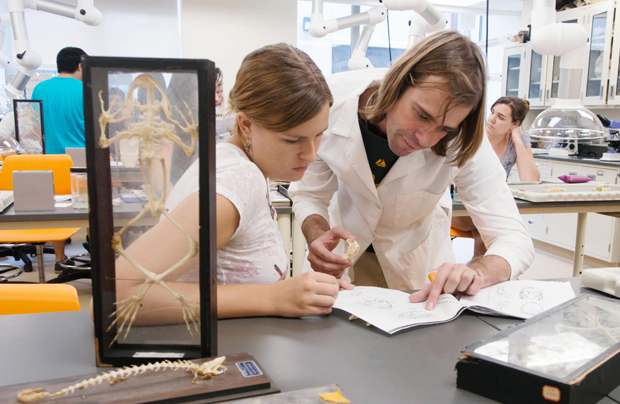The University of Hawaiʻi has taken an important step forward in its mission to create 21st century learning facilities while addressing its deferred maintenance backlog with the issuing of a request for proposal (RFP) for the turn-key delivery of the Life Sciences building project on the Mānoa campus.
The state-of-the art facility will provide new facilities for the College of Natural Sciences biology, microbiology and botany departments along with the Pacific Biosciences Research Center and the Biological Electron Microscope Facility. The 45,000-square-foot structure will include teaching and research laboratories, laboratory support spaces and office spaces. Tentatively scheduled to open in fall 2019, the building will serve 1,000 students weekly and house 23 faculty members and 60 graduate students.
“The Life Sciences building is designed for interdisciplinary collaboration and will support modern teaching, learning, innovation and scholarship in step with sustainability through LEED certification,” said UH Mānoa Chancellor Robert Bley-Vroman.
The entire project will include a new building to replace Snyder Hall and be built on the current site of Henke Hall. The demolition of both buildings is included in the project, which is expected to eliminate $19 million of UH Mānoa’s deferred maintenance backlog. Budget estimates for the total project are approximately $50 million, making this one of the most significant capital projects on the upper campus in the past 10 years.
Updates to the capital improvement processes
“The Life Sciences building project also represents a different approach to the way the university has been undertaking major capital improvement projects,” said UH President David Lassner. “This is UH’s first design-build project for many years.”
Design-build is an integrated delivery process that maintains a single contractor and contract for both the design and construction of the project with a fixed, upfront cost. Design-build projects are more likely to be completed on time and with fewer cost overruns than the typical design-bid-build process.
The RFP was issued through the Hawaiʻi Electronic Procurement System, which UH recently transitioned to as its centralized online system for issuing solicitations and receiving proposals or bids for university projects. The university will also be using a newly implemented project management system to better administer the project.
State support
The state legislature appropriated $35 million for the project in the 2016 session, which is being combined with funding from the 2015 UH appropriation to complete the project.
“We want to thank state lawmakers and the governor for their support,” said Lassner. “UH leadership knows that the money appropriated for this and future capital improvement projects must be spent in an efficient, effective and timely manner to advance 21st century teaching, learning and research.”


